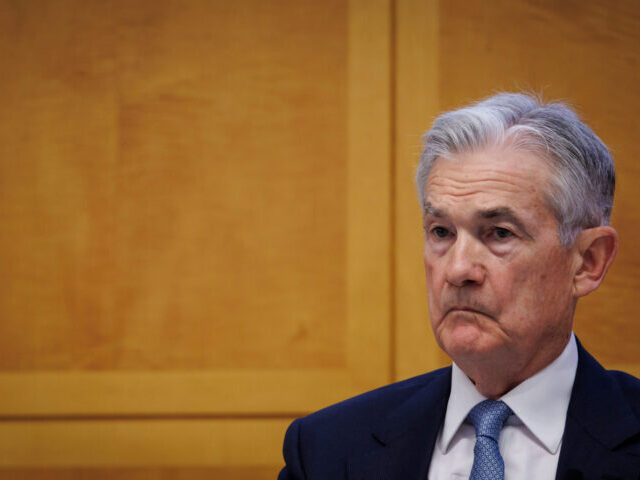Federal Reserve Chair Jerome Powell on Friday pushed back on the idea that rate cuts could come early next year, saying the Fed could tighten monetary policy further if needed.
“It would be premature to conclude with confidence that we have achieved a sufficiently restrictive stance, or to speculate on when policy might ease. We are prepared to tighten policy further if it becomes appropriate to do so,” Powell said in a speech at Spelman College.
Powell added that the Fed is making decisions on monetary policy “meeting by meeting.” Future decisions will be “based on the totality of the incoming data and their implications for the outlook for economic activity and inflation, as well as the balance of risks.”
The risks of the Fed over-tightening—and perhaps bringing on a recession—or under-tightening—perhaps triggering a resurgence of inflation, Powell said, are becoming “more balanced.”
The personal-consumption expenditure price index showed Thursday that inflation had cooled to three percent in October, a full percentage point above the Federal Reserve’s two percent target. Core inflation, which excludes food and energy prices, is running even hotter, at 3.5 percent over the past twelve months.
The Fed uses the personal-consumption expenditure price index as the metric for its two percent target. The government’s other primary measure of consumer inflation, the consumer price index (CPI), rose 3.2 percent in October. Core CPI is up four percent.
Powell said uncertainty about the economic outlook is “unusually elevated.” But he noted that he and other Fed officials anticipate spending and economic output will slow over the next year, citing the November 2023 Blue Chip consensus forecast for fourth quarter to fourth quarter real gross domestic product growth to drop from 2.5 percent in 2023 to 0.8 percent in 2024.
That growth figure is substantially lower than the median projection of Fed officials for 1.5 percent growth next year, as reported in the Summary of Economic Projections released after the Fed’s September meeting. Powell’s reference to the Blue Chip forecast may indicate that he—and perhaps his fellow Fed officials—are now expecting lower growth next year.
The Fed chairman said that high inflation initially arose from “a collision between very strong demand and pandemic-constrained supply,” breaking with Biden administration claims that the driver of inflation has been price gouging and supply chain problems. He credited “The normalization of supply and demand conditions” with playing a role in reducing inflation, alongside tighter monetary policy and tighter overall financial conditions.
Traders and economists expecting a rate cut in the first half of next year likely took comfort in Powell’s claim that past hikes are likely to continue to exercise disinflationary pressures in the year ahead.
“The strong actions we have taken have moved our policy rate well into restrictive territory, meaning that tight monetary policy is putting downward pressure on economic activity and inflation. Monetary policy is thought to affect economic conditions with a lag, and the full effects of our tightening have likely not yet been felt,” Powell said.
The next meeting of the Federal Open Market Committee—the panel of top Fed officials that sets monetary policy—is scheduled to take place on December 12-13. Markets reflect the view that the Fed will hold its interest rate target steady at a range of 5.25 to 5.50 percent at that meeting. The last time the Fed raised the target was at the July meeting.
If Powell’s remarks were intended to convince the market to back off of the growing certainty that the Fed will cut rates in the first half of next year, the immediate market reaction appeared to indicate they were not persuasive.
Following Powell’s remarks the chance that the Fed cut at the end of January edged up from 4 percent to 10 percent, according to the CME FedWatch Tool. The chances of a cut at the March 19-20 meeting moved up to 62.9 percent, a big move from yesterday’s odds of less than 45 percent. The market is now pricing in a better than 87 percent chance of a cut in May. By June, the futures market now reflects near certainty of at least one rate cut and around a 75 percent chance of two rate cuts.
Treasury yields fell on Friday, an indicator that the market expects rate cuts sooner despite Powell’s remarks. The two-year Treasury yield dropped by more than 14 basis points to 4.582 percent. The yield on 10-year Treasury notes dropped 10 basis points to 4.249 percent. Yields fall as bond prices increase. A basis point is equal to one-hundreth of a percentage point.

COMMENTS
Please let us know if you're having issues with commenting.